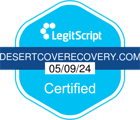California lawmakers are trying something different to deal with uncontrollable increases in drug overdose deaths in the state. They want to pay people with substance use disorders to stay sober.
They point out that the federal government has used this type of program for years, such as with Military Veterans who have participated. Researchers say that it is an effective method to help people stop using stimulants like methamphetamine and cocaine. Currently, there are no pharmaceutical treatments available to treat addiction to these drugs.
No Pharmaceutical Drug Treatments for Stimulants
California has seen overdose deaths from stimulants jump nearly fourfold in the years 2010-2019. The problem has worsened since then.
Preliminary reports from the first nine months of 2020 (when many parts of the state were locked down due to the coronavirus) revealed that stimulant overdose deaths increased 42% over the previous year.
People receiving treatment for opioid use disorder can take more than one medication to help them get (and stay) sober. Taking pills is not an option when treating clients addicted to cocaine or methamphetamine. Often, someone in this situation must use willpower to maintain their sobriety.
How the Pay-to-Stay-Sober Program Works
Participants in the program earn payments or incentives for each negative drug test tracked over a specific time. In most cases, participants who complete their treatment without testing positive for drugs can earn a few hundred dollars. The money is transferred to the participant on a gift card.
This type of program is called “contingency management.” California Governor Gavin Newsom has requested that the federal government allow tax dollars to finance the program. If the government agrees, the money will come from Medicaid, the health insurance program for low-income and disabled people funded by federal and state funds. Medicaid covers close to 14 million people in California.
Contingency management is an option that is often used. It is not clear whether current state and federal legislation allow Medicaid funds to pay for it. The proposed bill would clarify that contingency management is legal under state law.
Contingency Management Program Cost Would Vary
The cost of the program would depend on the number of participants. For example, if 1,000 people participated in a pay-to-stay-sober program, the cost could be as high as $286,000.00. This figure would be considered an insignificant number compared to California’s total operating budget of over $262 billion.
Sources:
npr.org/2021/08/26/1031220835/california-bill-treatment-addiction
leginfo.legislature.ca.gov/faces/billTextClient.xhtml?bill_id=202120220SB110



